The 2014 River Rally in Pittsburgh
Bill Dennison ·I attended the 2014 River Rally which was held in downtown Pittsburgh, Pennsylvania. My main reason for attending was to scope out this gathering as the appropriate venue to create the North American Riverprize. The International Riverfoundation which awards the Theiss International Riverprize every year at the International Riversymposium. The concept that has been gaining momentum over the past several years is to have a series of regional Riverprizes: European Riverprize, Australian Riverprize, North American Riverprize, etc. in which the winners automatically become eligible for the International Riverprize. The North American Riverprize is being spearheaded by Nicole Silk, President of the River Network, and several previous North American recipients of the Theiss International Riverprize (e.g., Bob Zimmerman, Charles River; Brian Kemp, Lake Simcoe Region Conservation Authority; Pam Willey, Willamette River). The plan is to have the first North American Riverprize awarded at the 2015 River Rally.
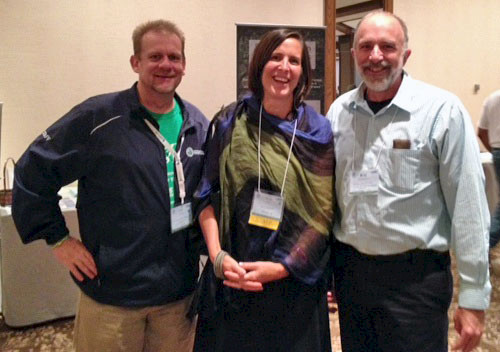
The River Rally is an annual gathering of the watershed conservation community. Every other year, the River Rally, produced by the River Network, is a joint conference with the Waterkeeper Conference. Since this year's conference was a joint gathering, it included riverkeepers and waterkeepers from all over the nation, including several from the Chesapeake.
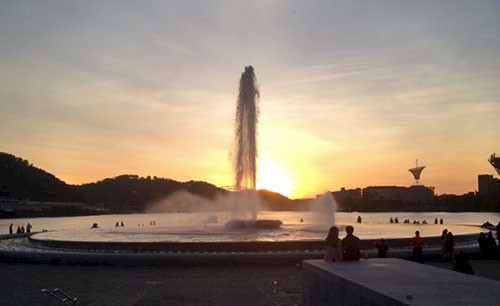
Downtown Pittsburgh is located at the confluence of the Allegheny and Monongahela Rivers which form the Ohio River. It was nice to be able to visit the top end of the Ohio River following our Ohio River workshop late last year in Cincinnati. There is a nice park at the point of land that juts out into the confluence called Point State Park. From this vantage point, I could see barges, party boats, and recreational boats on the river. There were active train tracks on both sides of the river and many bridges.
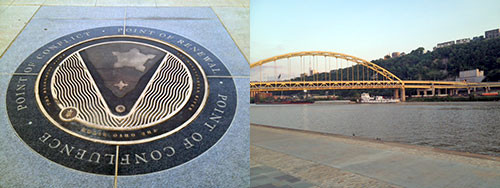
Historic Fort Pitt is located in this park. George Washington made the following observation in 1853, "I spent some time in viewing the Rivers, and the Land in the Fork, which I think extremely well situated for a Fort as it has the absolute command of both Rivers." The old blockhouse, part of Fort Pitt, is thought to be the oldest (1764) building still standing in Pittsburgh and perhaps the entire Mississippi basin. I stayed in a 98 year old hotel, the Omni William Penn Hotel, which was elegant and very nice.
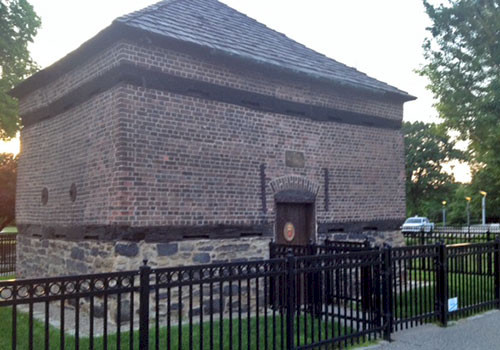
Robert F. Kennedy, Jr., President of the Waterkeepers Alliance, and gave a rousing after dinner speech. I especially enjoyed his comments about a Pittsburgh native, Rachel Carson, since I was wearing my Rachel Carson tee shirt at the time. Ben Longstaff, former IAN Science Integrator, and I introduced ourselves to Kennedy after his speech and had our picture taken with him. Kennedy offered everyone a free tattoo of the Riverkeeper symbol (a stylized sturgeon) as part of the festivities, but I passed on this opportunity.
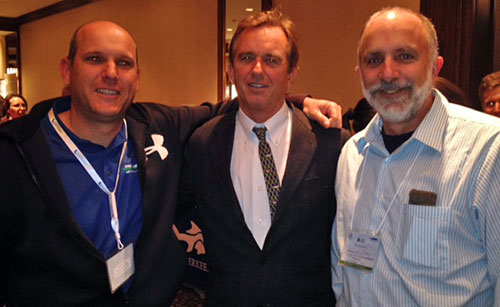
In addition to plenary talks associated with each meal (full breakfast, lunch and dinners were served), a series of breakout workshops were conducted. I attended a series of three 90 minute workshops called 'Breaking Through Barriers' facilitated by Eric Eckl from Water Words That Work. Eric did a wonderful job of taking us through his six steps for creating effective environmental messages: 1) Begin with behavior, 2) Find foolproof photos, 3) Swap the shoptalk, 4) Insert the words that work, 5) Use tempting testimonials, and 6) Review readability. He gave us ten profiles of fictional people who were in the underserved segment of society to target for various environmental messages. This was a challenging task, but the exercises served to illustrate the importance of developing clear messages and avoid the "-ions": frustration, irritation and suspicion.
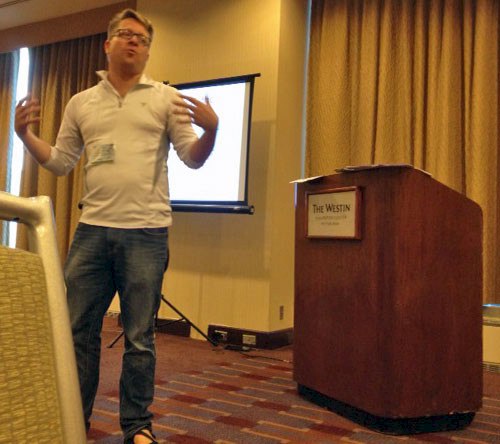
Eric talked about developing a message that starts with WHAT you want people to do, followed by WHY and then telling them HOW to do it. Most people start their conservation message with WHY and lose their audience before getting to the WHAT to do items. Eric also exposed us to various free data sources for socio-economic data via the U.S. Census, direct marketing tools, google and Facebook. He encouraged us to use readability scores to guide the writing style. He encouraged us to use shorter words, shorter sentences and active, not passive voice. The example of passive voice was when a sentence could read correctly when the words ". . . by zombies" could be added to the end of the sentence.

This was my first River Rally, and I found it extremely worthwhile. The workshops were excellent, the venue was superb and the diversity of committed and passionate people was impressive. Based on this experience, this will not be my last River Rally.
About the author
Bill Dennison

Dr. Bill Dennison is a Professor of Marine Science and Interim President at the University of Maryland Center for Environmental Science (UMCES).
Next Post > Missouri River: Environmental Literacy
Comments
-
Empower Network 10 years ago
Your style is so unique compared to other folks I've read stuff from.
Many thanks for posting when you've got the opportunity, Guess I will just book mark this site.